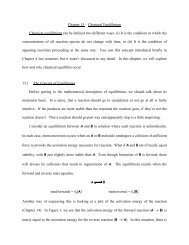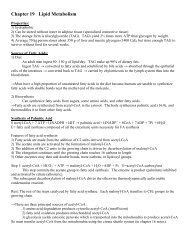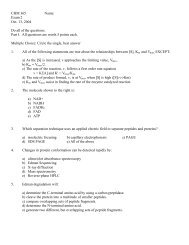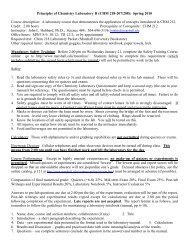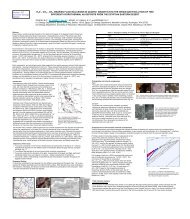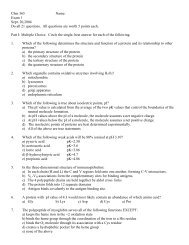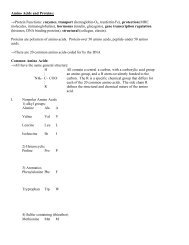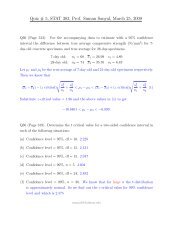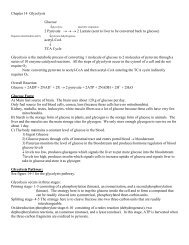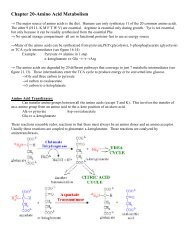LAB 1: INTRODUCTION TO MOTION
LAB 1: INTRODUCTION TO MOTION
LAB 1: INTRODUCTION TO MOTION
Create successful ePaper yourself
Turn your PDF publications into a flip-book with our unique Google optimized e-Paper software.
Position (m)<br />
Position (m)<br />
Position (m)<br />
Position (m)<br />
Lab 1: Uniform Motion<br />
speed? What does the graph look like when you move toward the detector? Away from it?<br />
Note it is better to use the terms away and towards, rather than forward and backward, since<br />
the latter might be confused with the walker’s orientation as they move. After completing this<br />
activity you should be able to look at a distance-time graph and describe the motion of an<br />
object. You should also be able to look at the motion of an object and sketch a graph<br />
representing that motion. The next step is to give you some practice in doing this.<br />
4. On the axes below, predict the shape of the position-time graphs for each of the described<br />
motions with a broken line. Then check your predictions by moving in the described way and<br />
draw the actual curve with a solid line.<br />
a. Use broken line first predict a distancetime<br />
graph, walking away from the<br />
detector (origin) slowly and steadily.<br />
Now check your prediction and draw it<br />
with a solid line.<br />
b. Use broken line first predict a distancetime<br />
graph, walking away from the<br />
detector (origin) medium fast and steadily.<br />
Now check your prediction and draw it<br />
with a solid line.<br />
Time (s)<br />
c. Use broken line first predict a distancetime<br />
graph, walking toward the detector<br />
(origin) slowly and steadily. Now check<br />
your prediction and draw it with a solid<br />
line.<br />
Time (s)<br />
d. Use broken line first predict a distancetime<br />
graph, walking away from the<br />
detector (origin) starting off medium fast<br />
and slowing down to a stop. Now check<br />
your prediction and draw it with a solid<br />
line.<br />
Time (s)<br />
Time (s)<br />
Question 1-1: What is the difference between the graph made by walking away from the<br />
detector slowly and steadily and the one made walking away quickly and steadily?<br />
Question 1-2: What is the difference between the graph made by walking steadily toward the<br />
motion detector and one made walking steadily away from the motion detector?<br />
Page 1- 3



